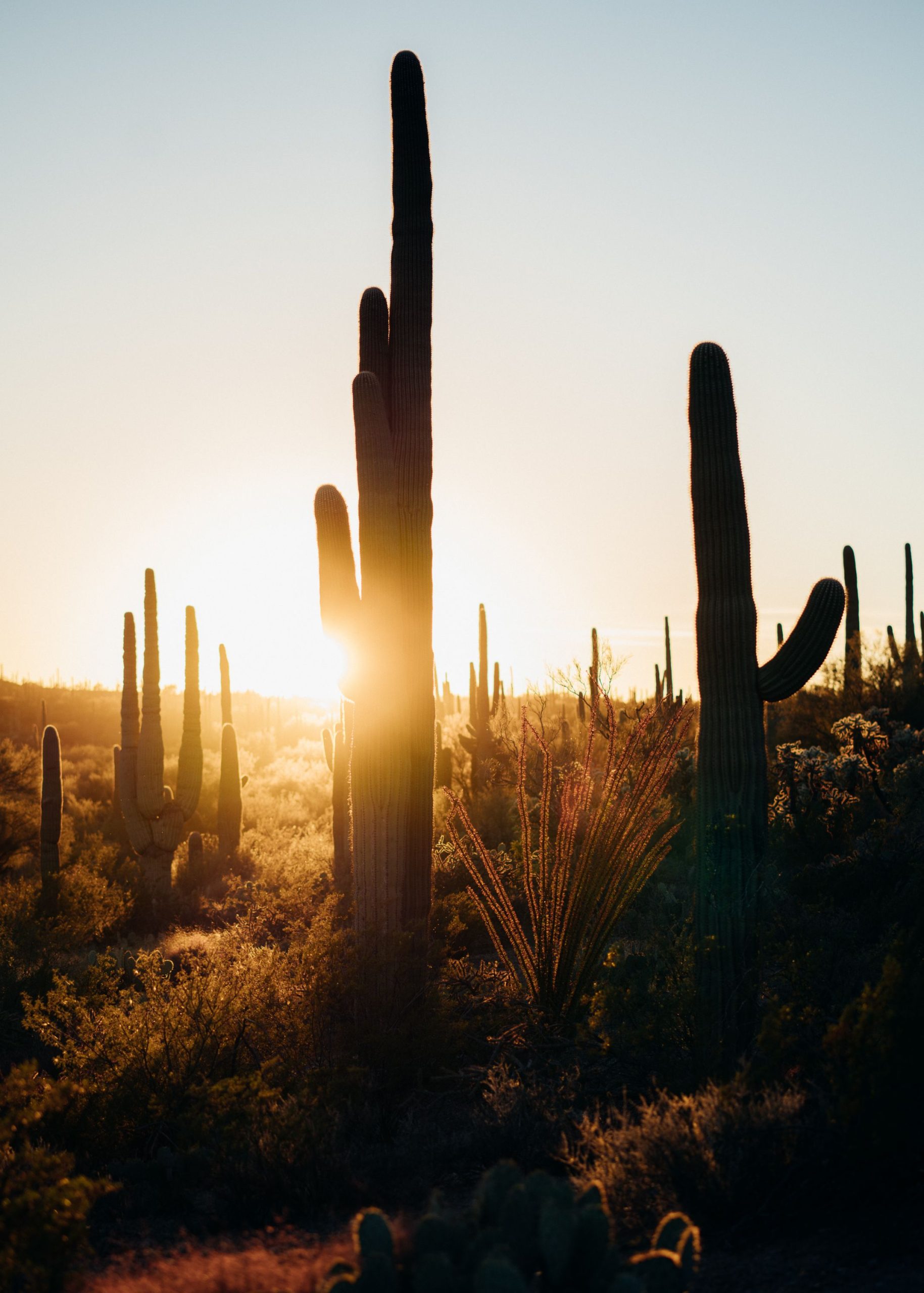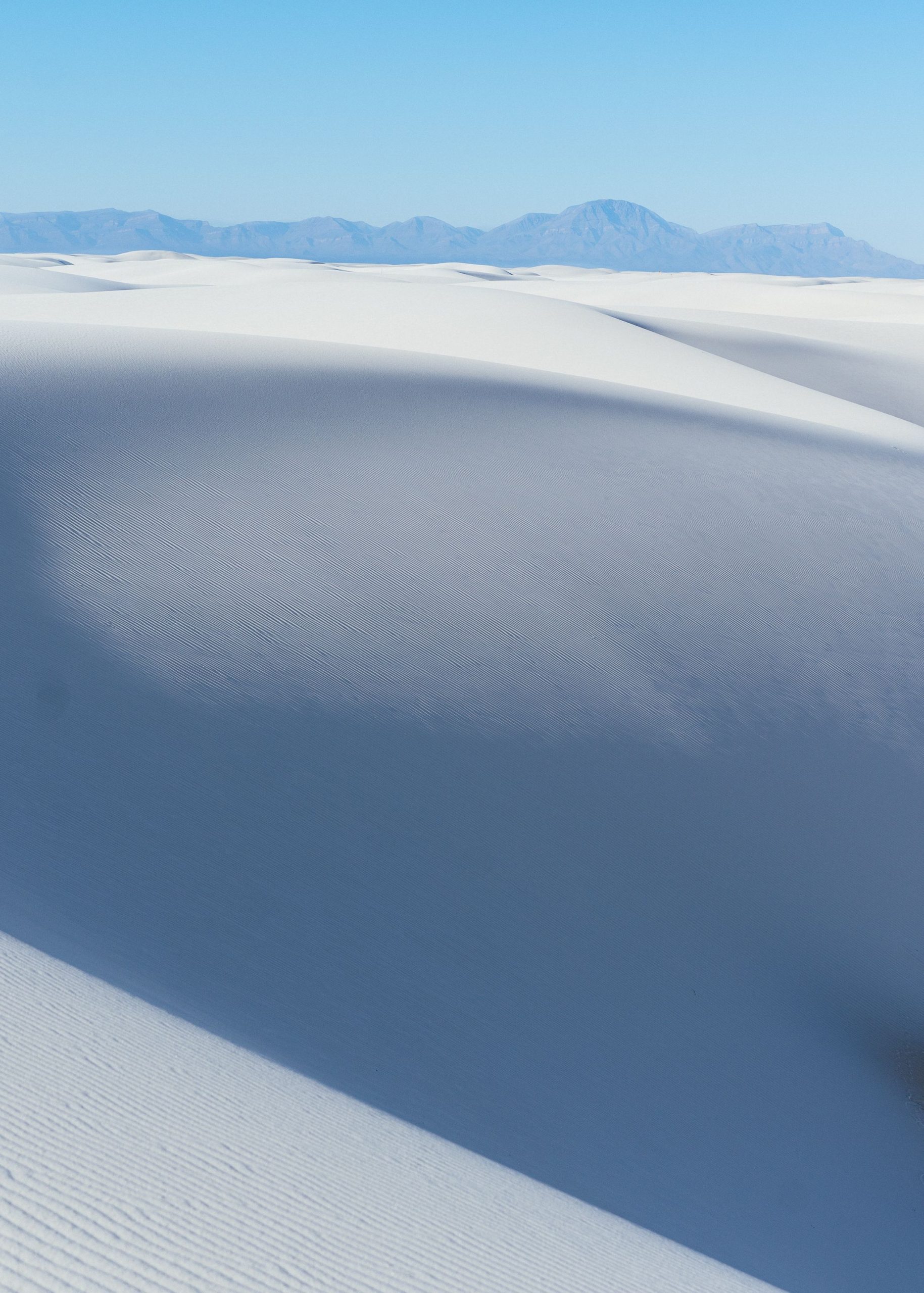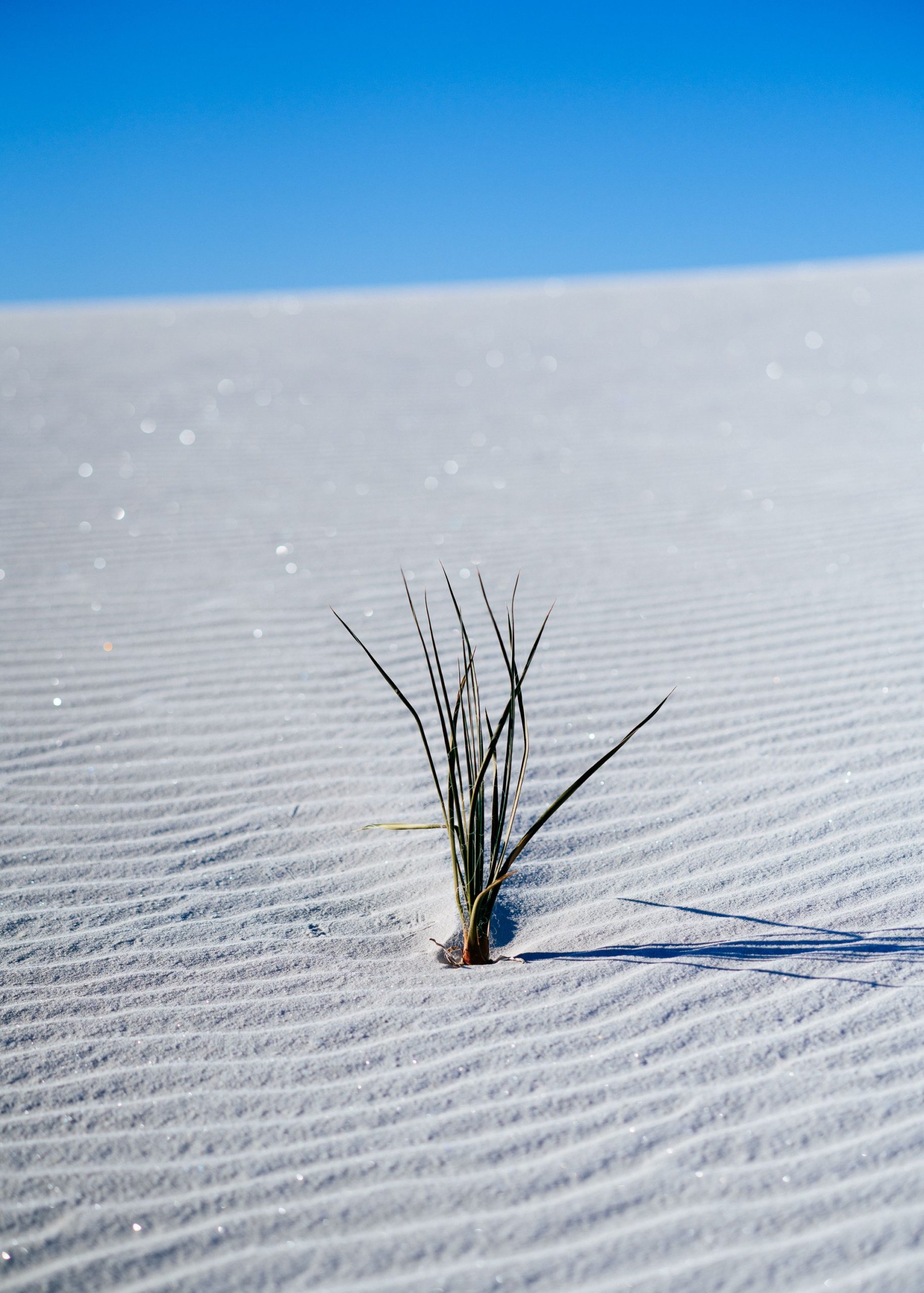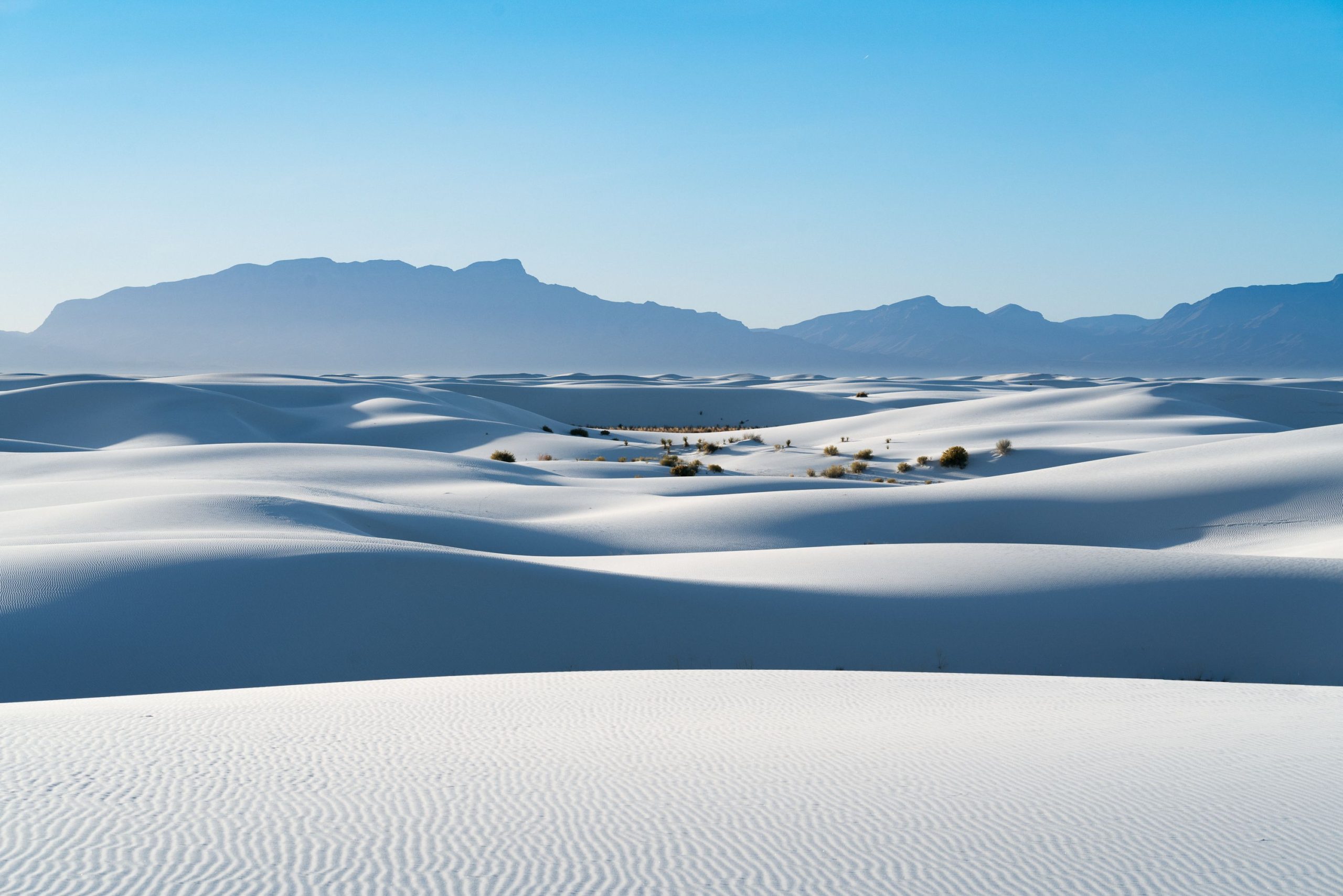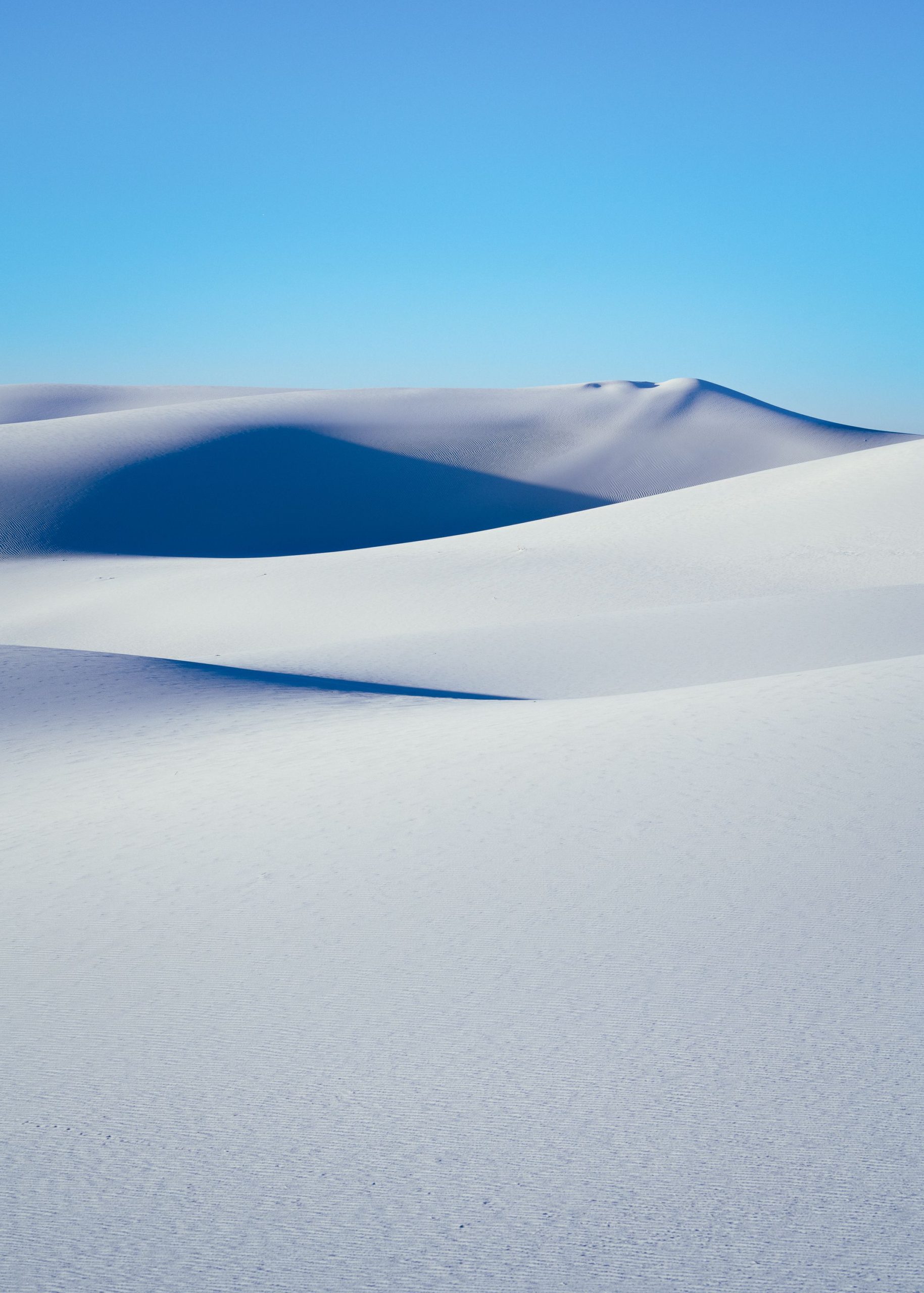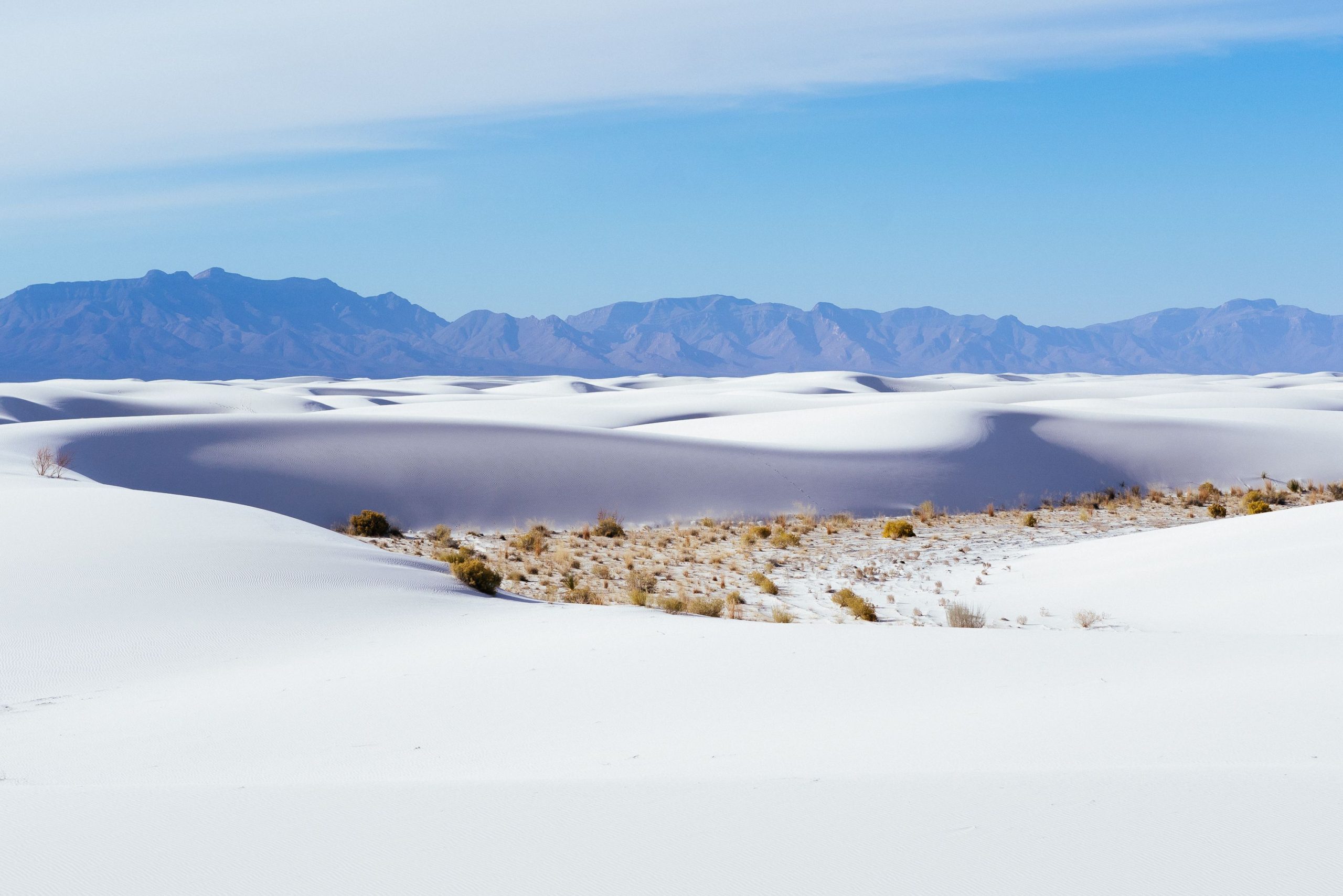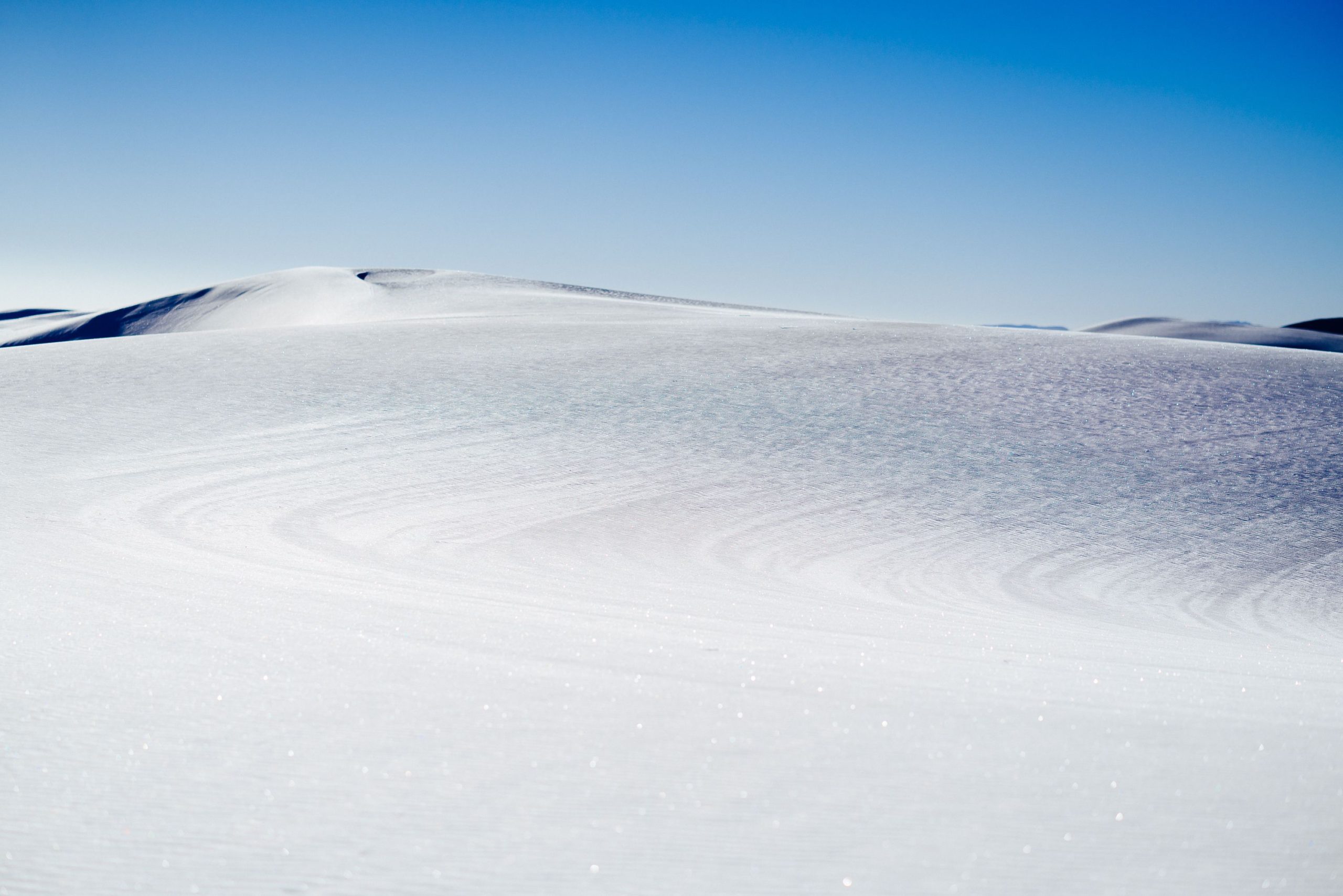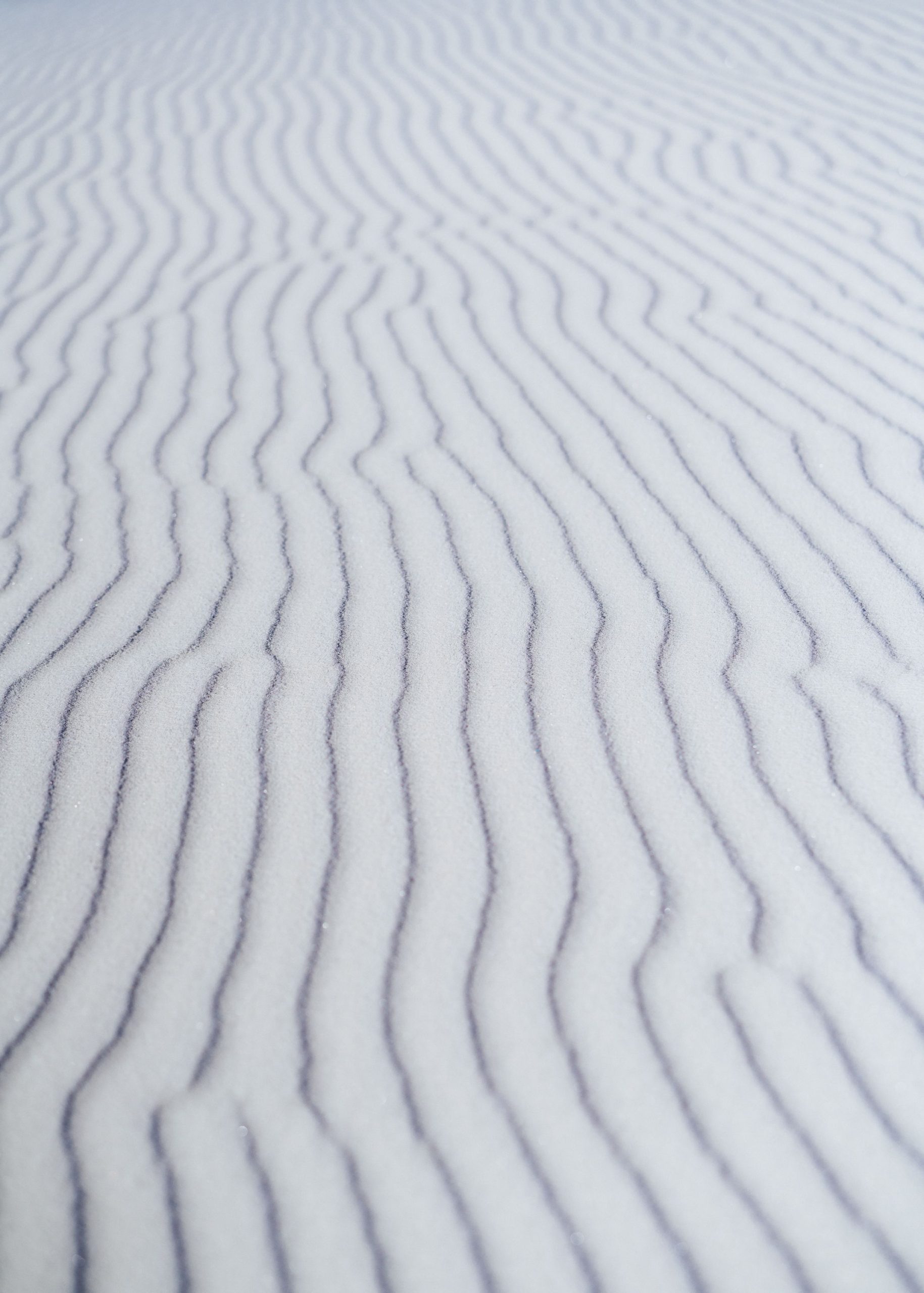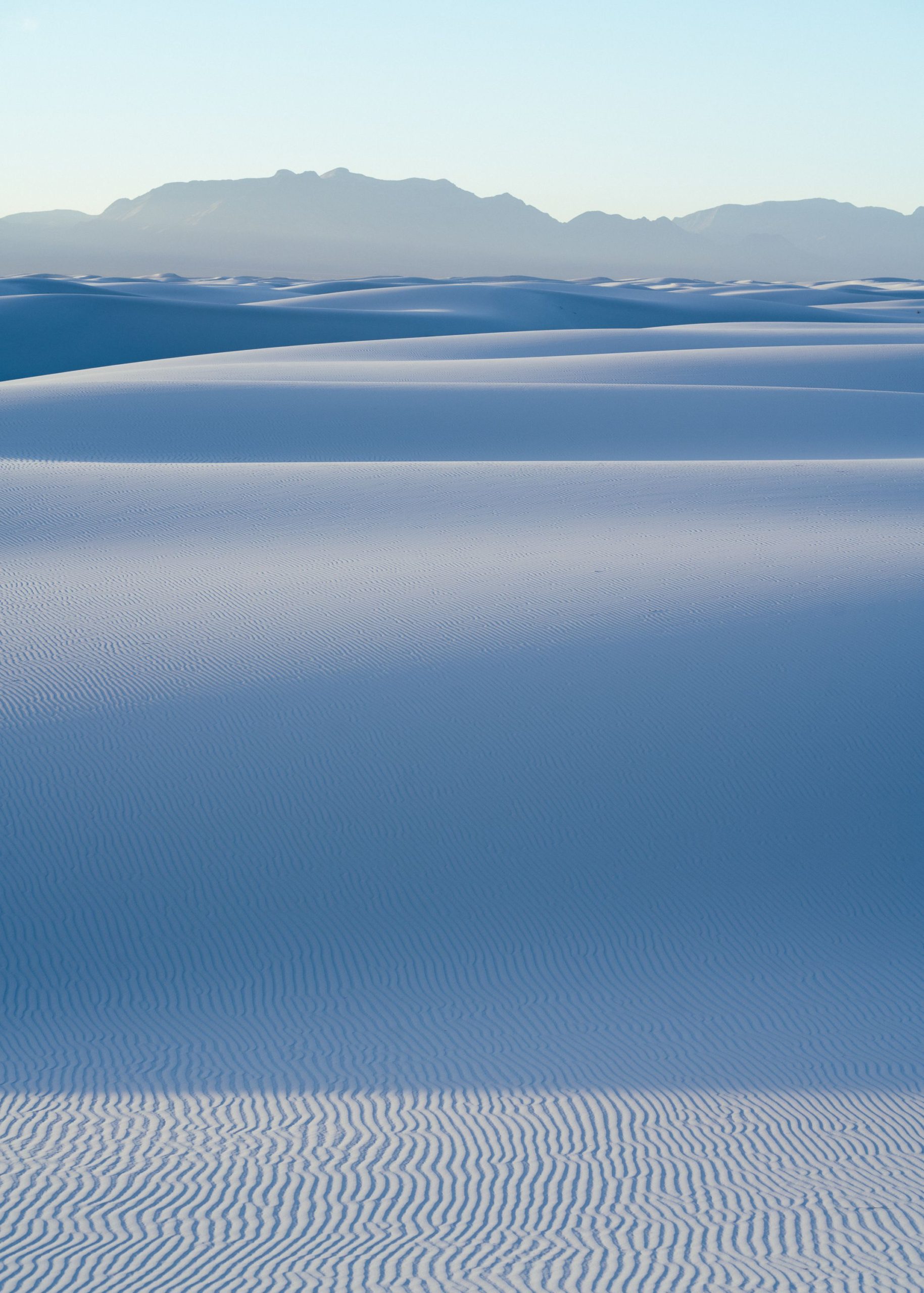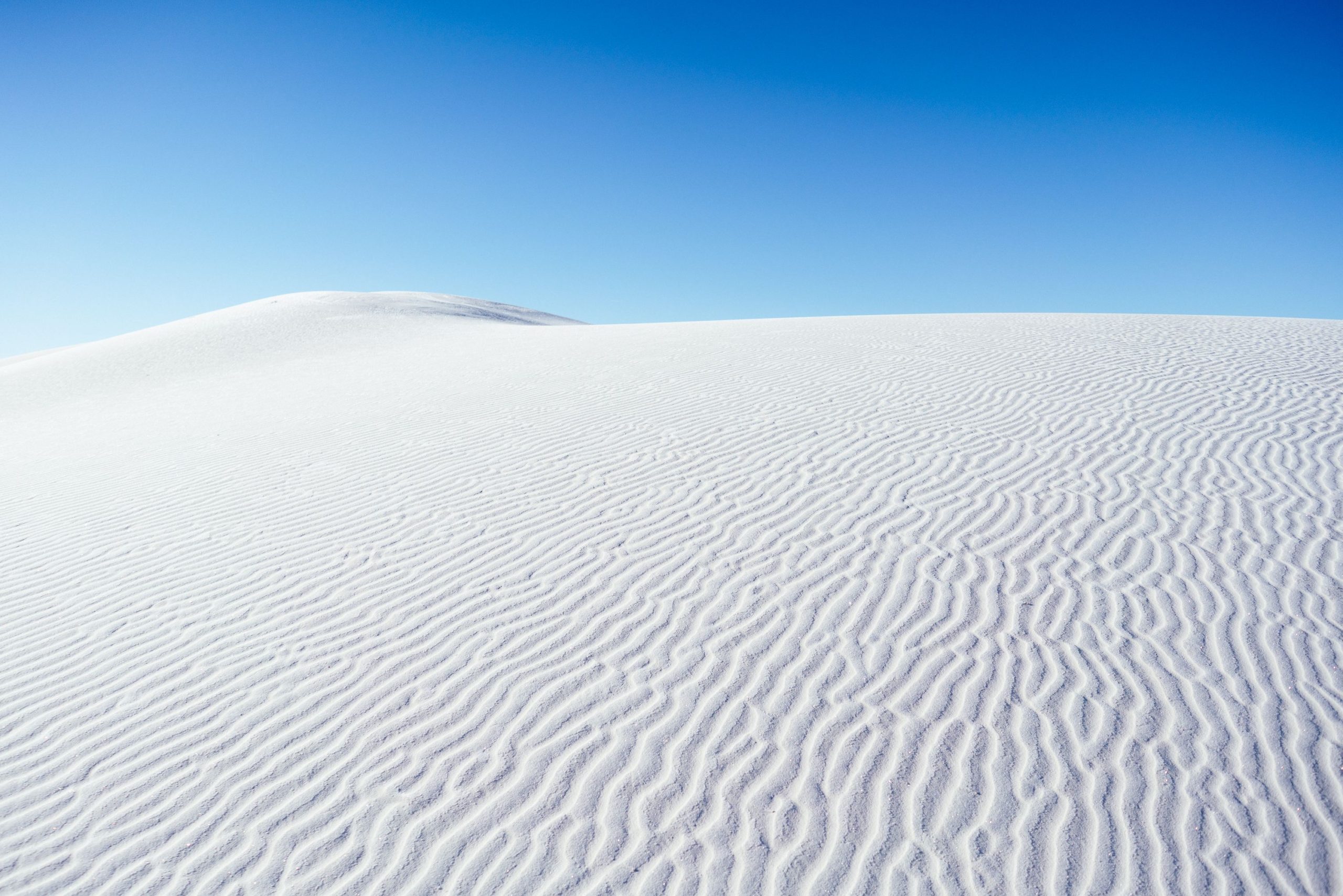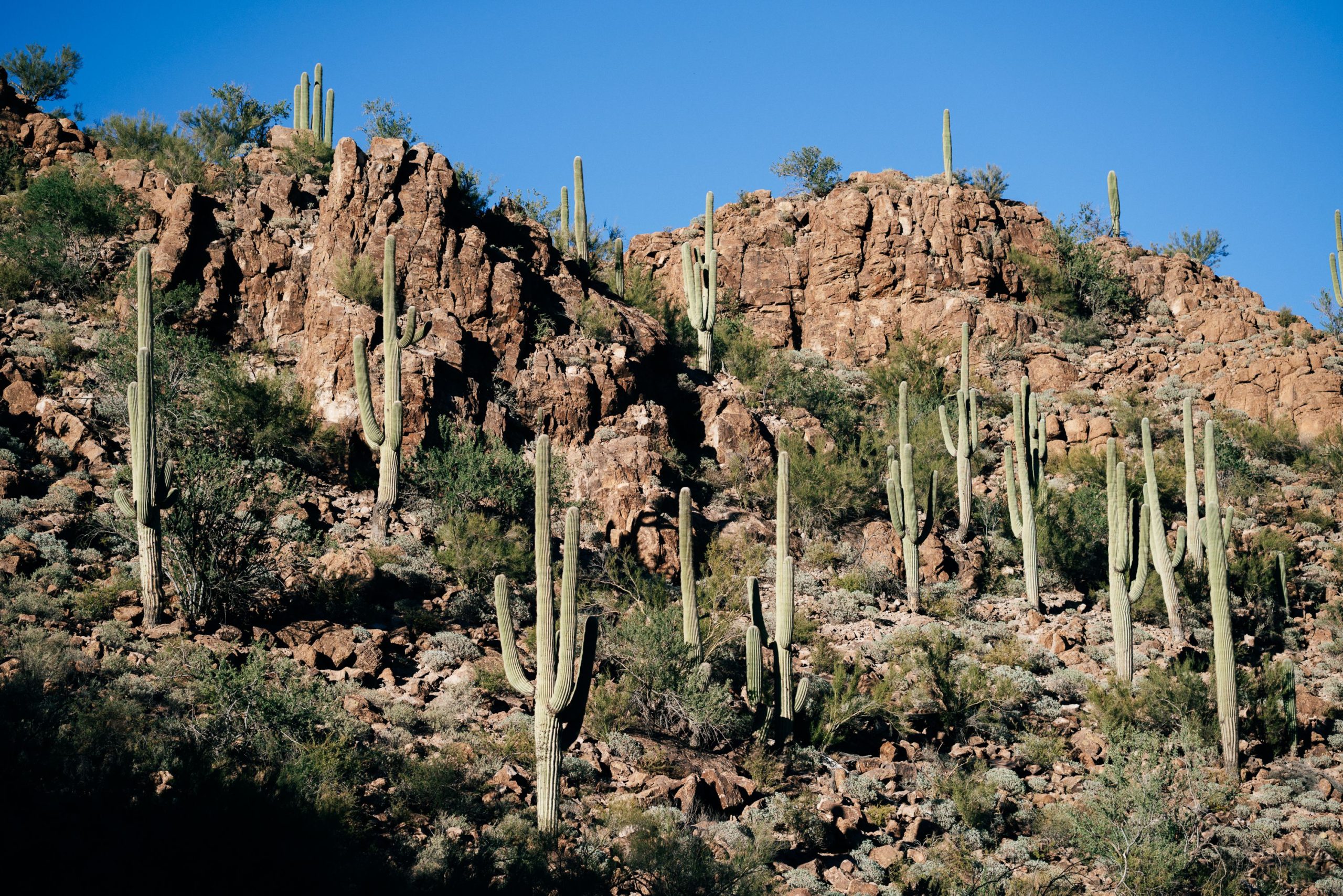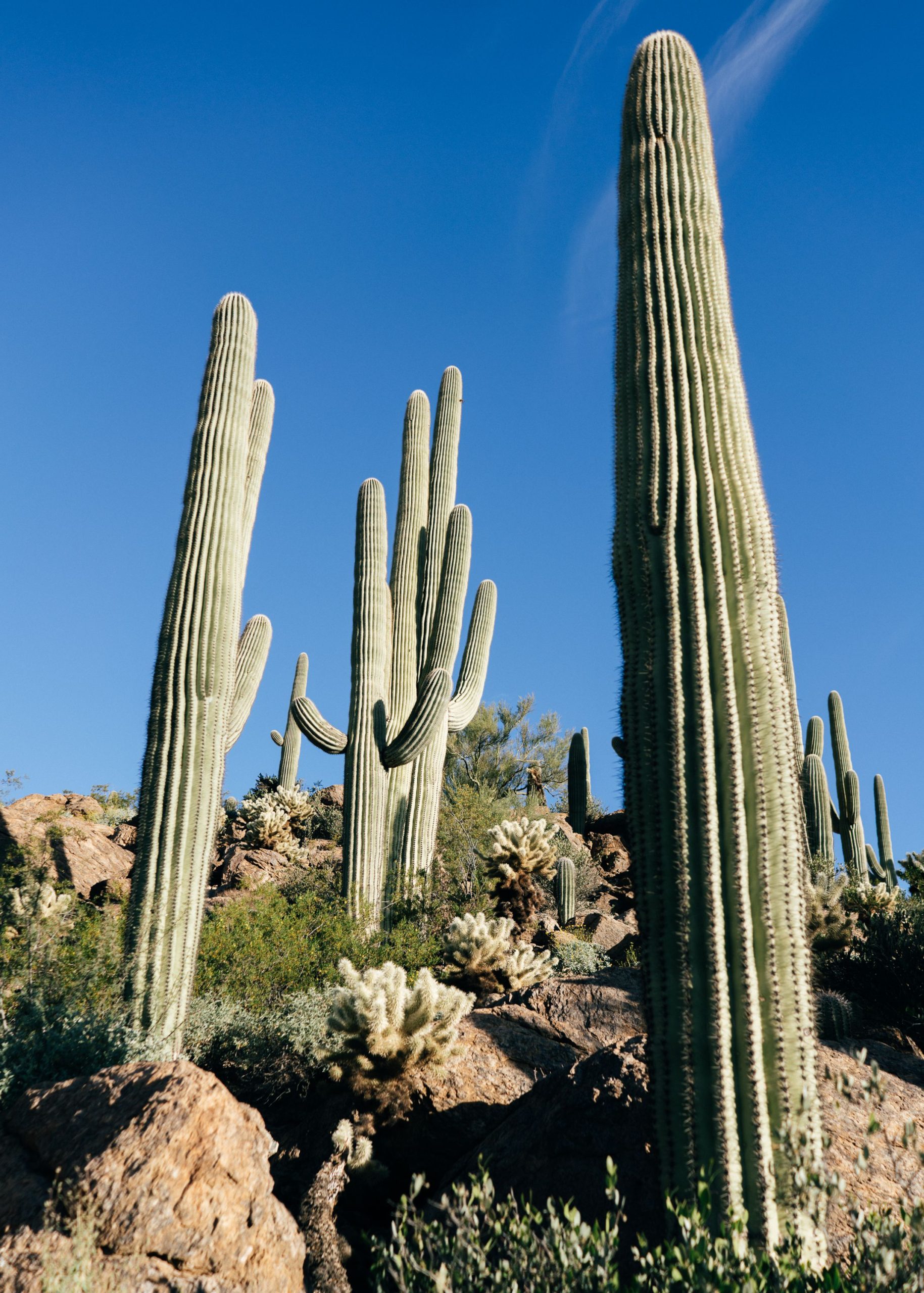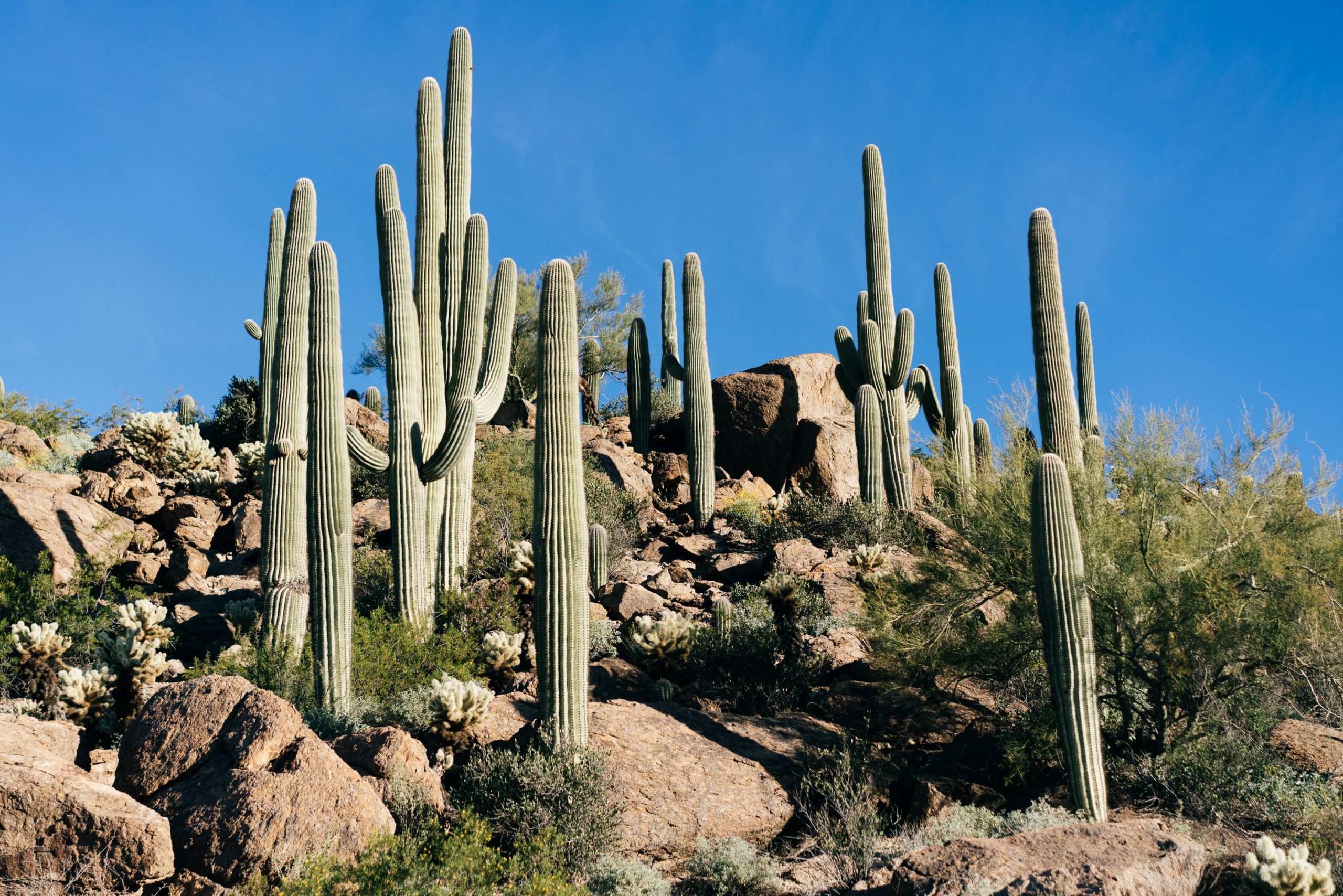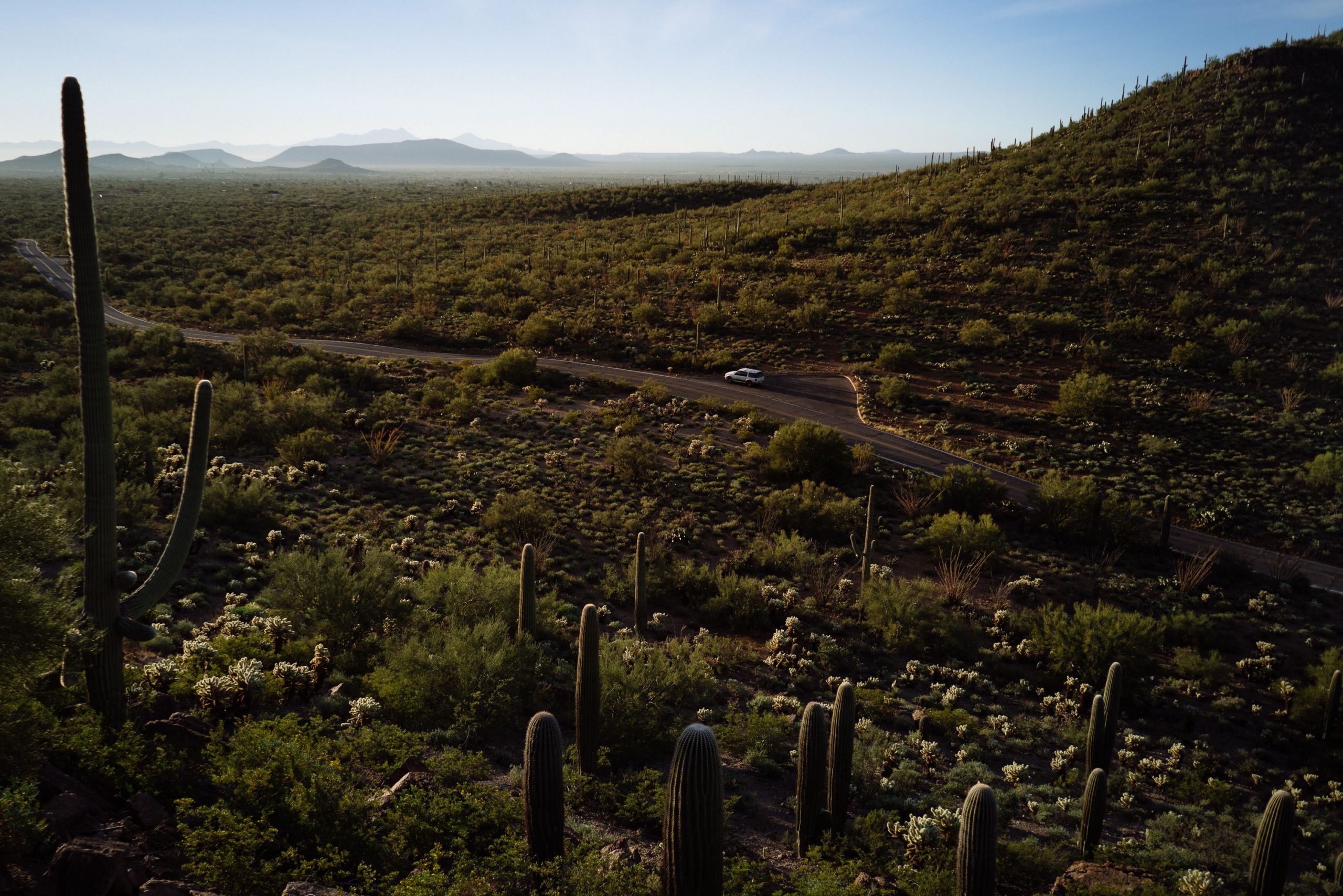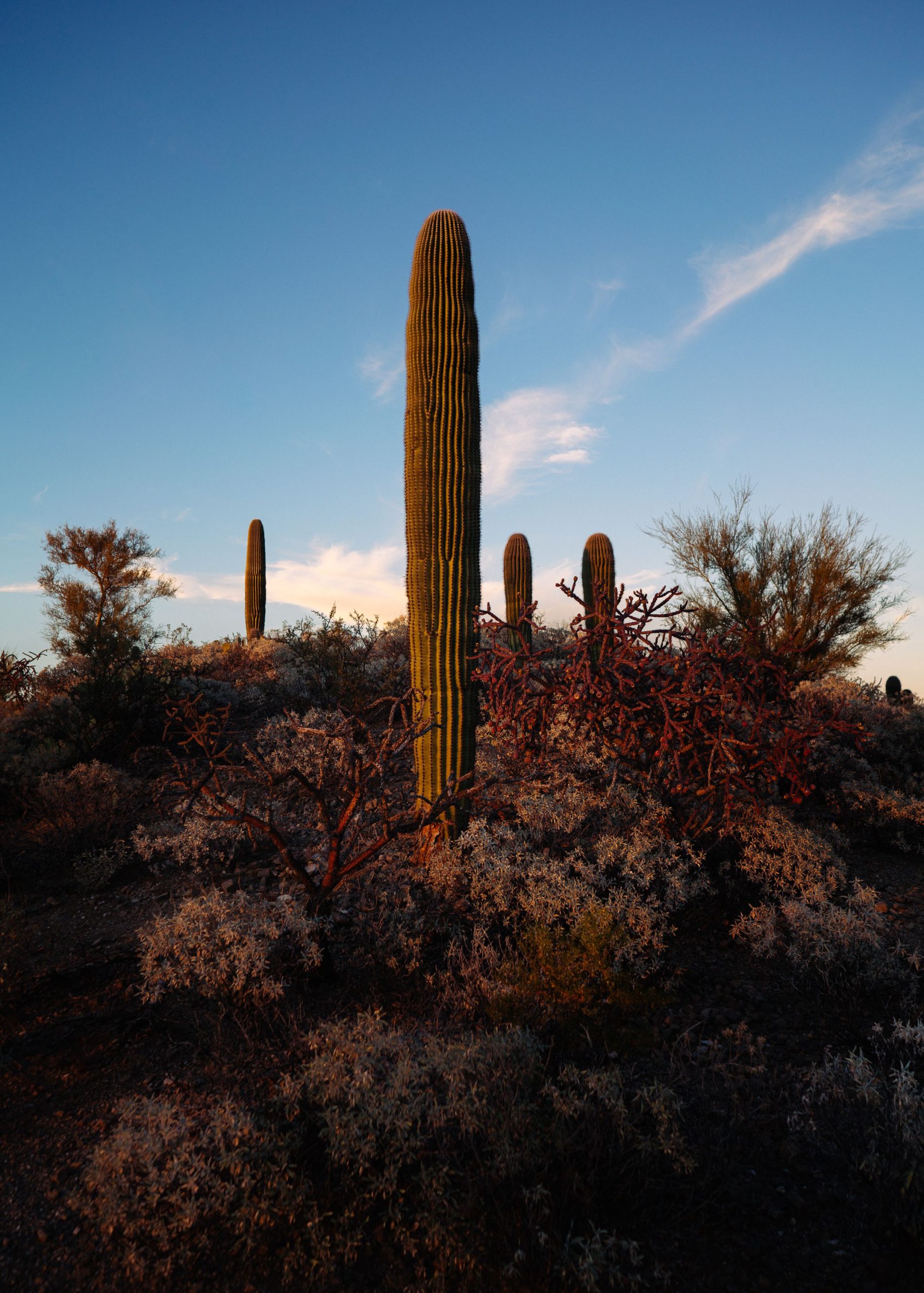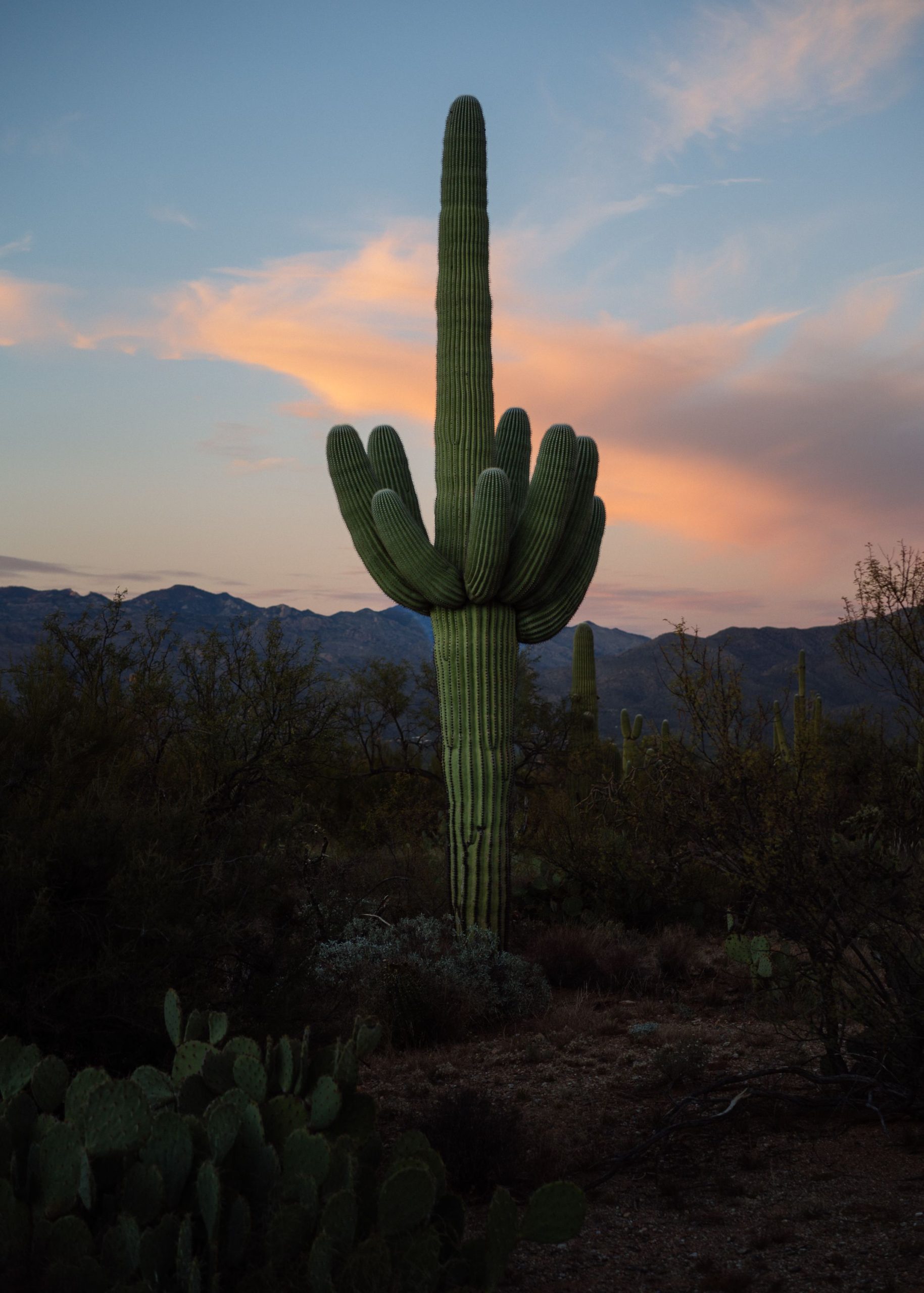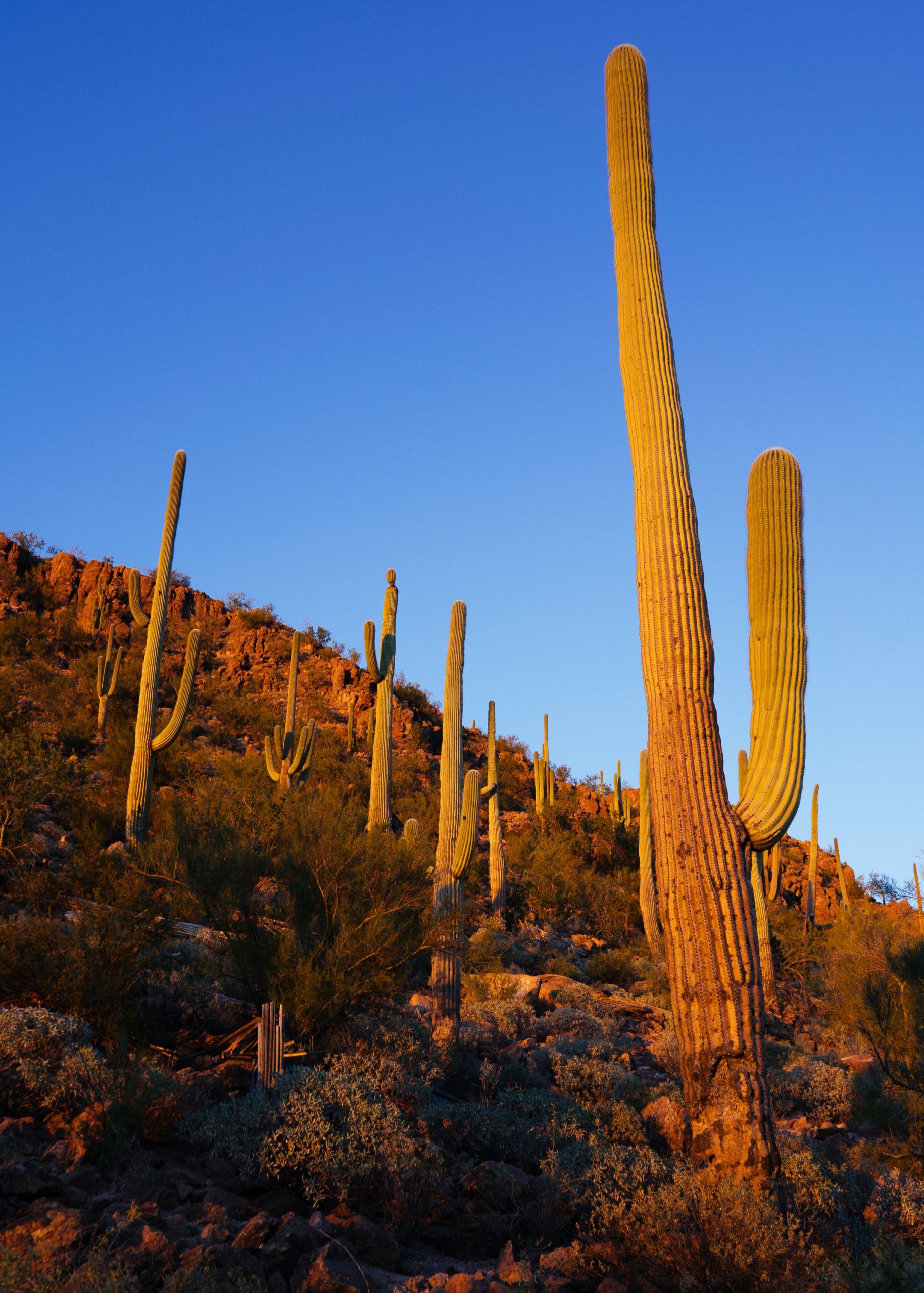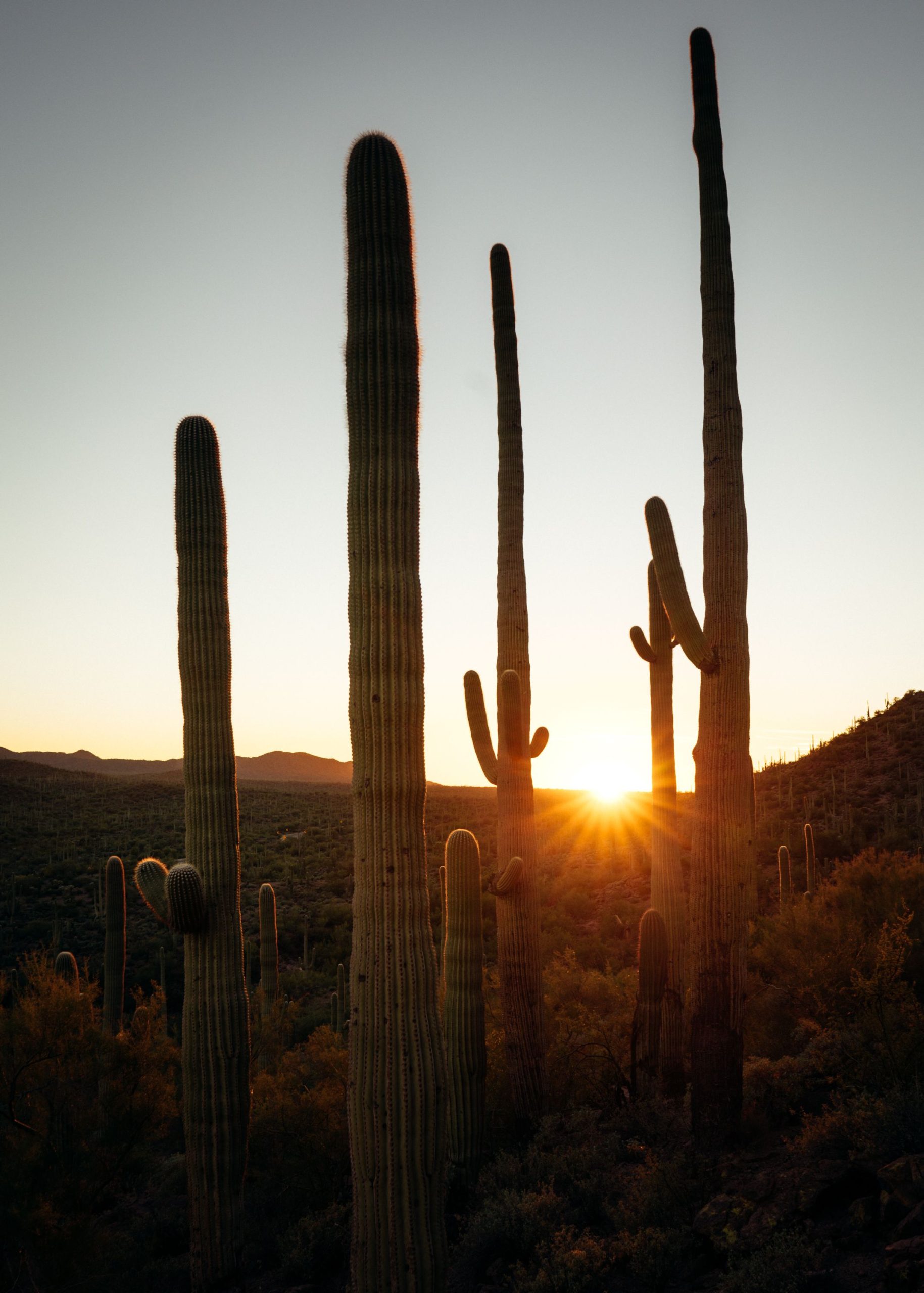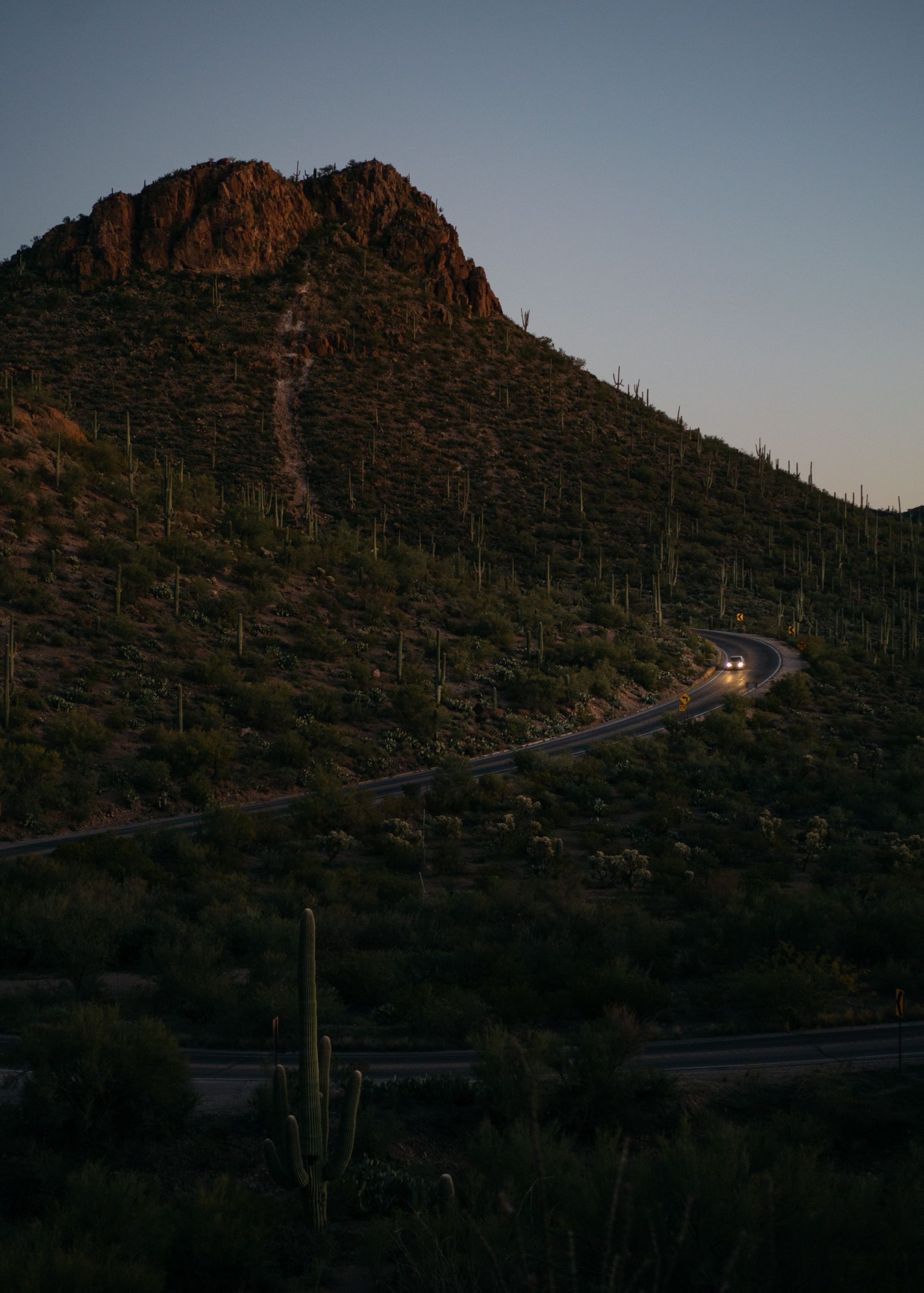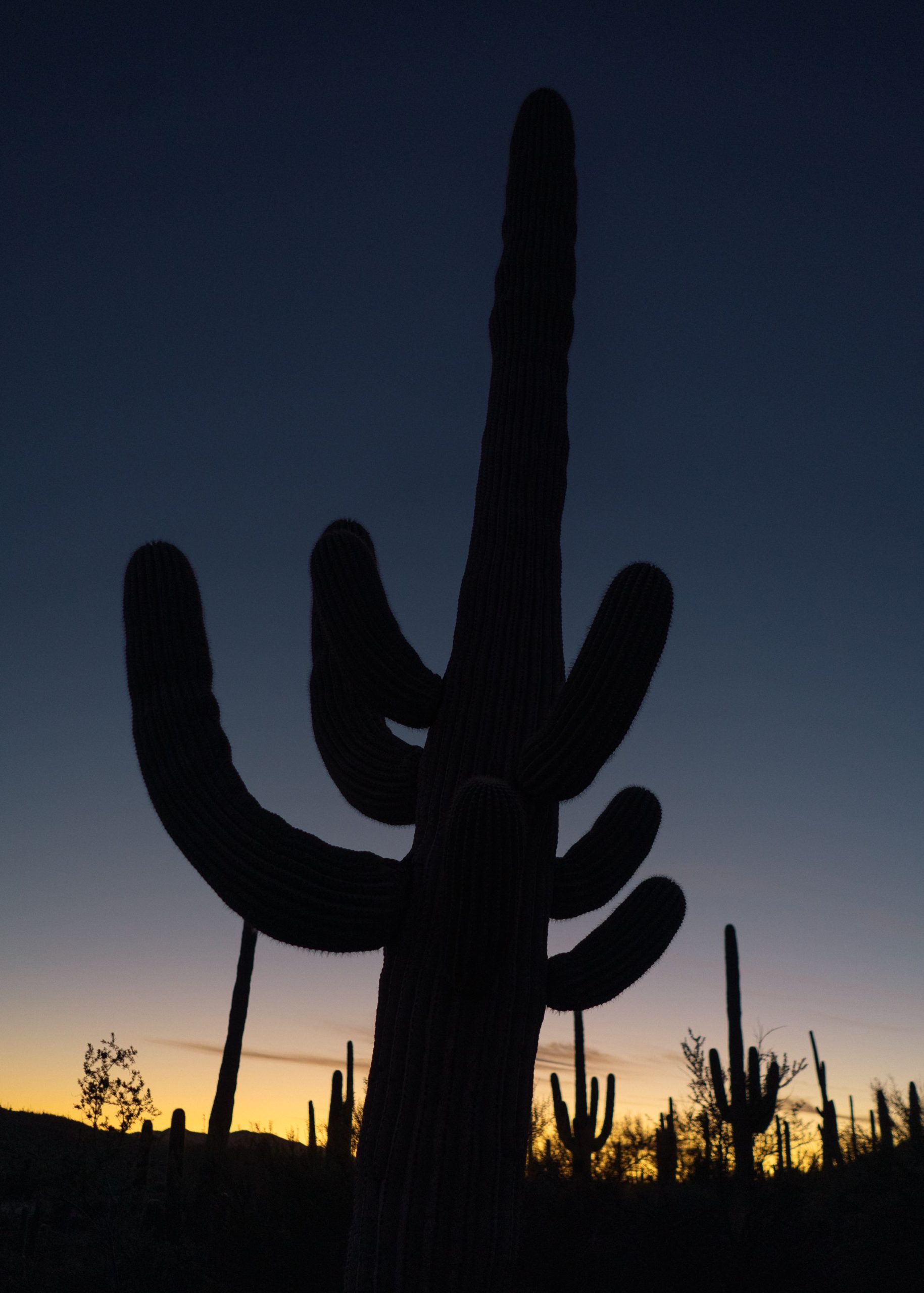White Sands National Park
is an American national park located in the state of New Mexico and completely surrounded by the White Sands Missile Range. The park covers 145,762 acres (227.8 sq mi; 589.9 km2) in the Tularosa Basin, including the southern 41% of a 275 sq mi (710 km2) field of white sand dunes composed of gypsum crystals.
This gypsum dunefield is the largest of its kind on Earth, with a depth of about 30 feet (9.1 m), dunes as tall as 60 feet (18 m), and about 4.5 billion short tons (4.1 billion metric tons) of gypsum sand.
Approximately 12,000 years ago, the land within the Tularosa Basin featured large lakes, streams, grasslands, and Ice Age mammals. As the climate warmed, rain and snowmelt dissolved gypsum from the surrounding mountains and carried it into the basin. Further warming and drying caused the lakes to evaporate and form selenite crystals. Strong winds then broke up crystals and transported them eastward. A similar process continues to produce gypsum sand today.
Thousands of species of animal inhabit the park, a large portion of which are invertebrates. Several animal species feature a white or off-white coloration. At least 45 species are endemic, living only in this park, with 40 of them being moth species. The Tularosa Basin has also seen a number of human inhabitants, from Paleo-Indians 12,000 years ago to modern farmers, ranchers, and miners.
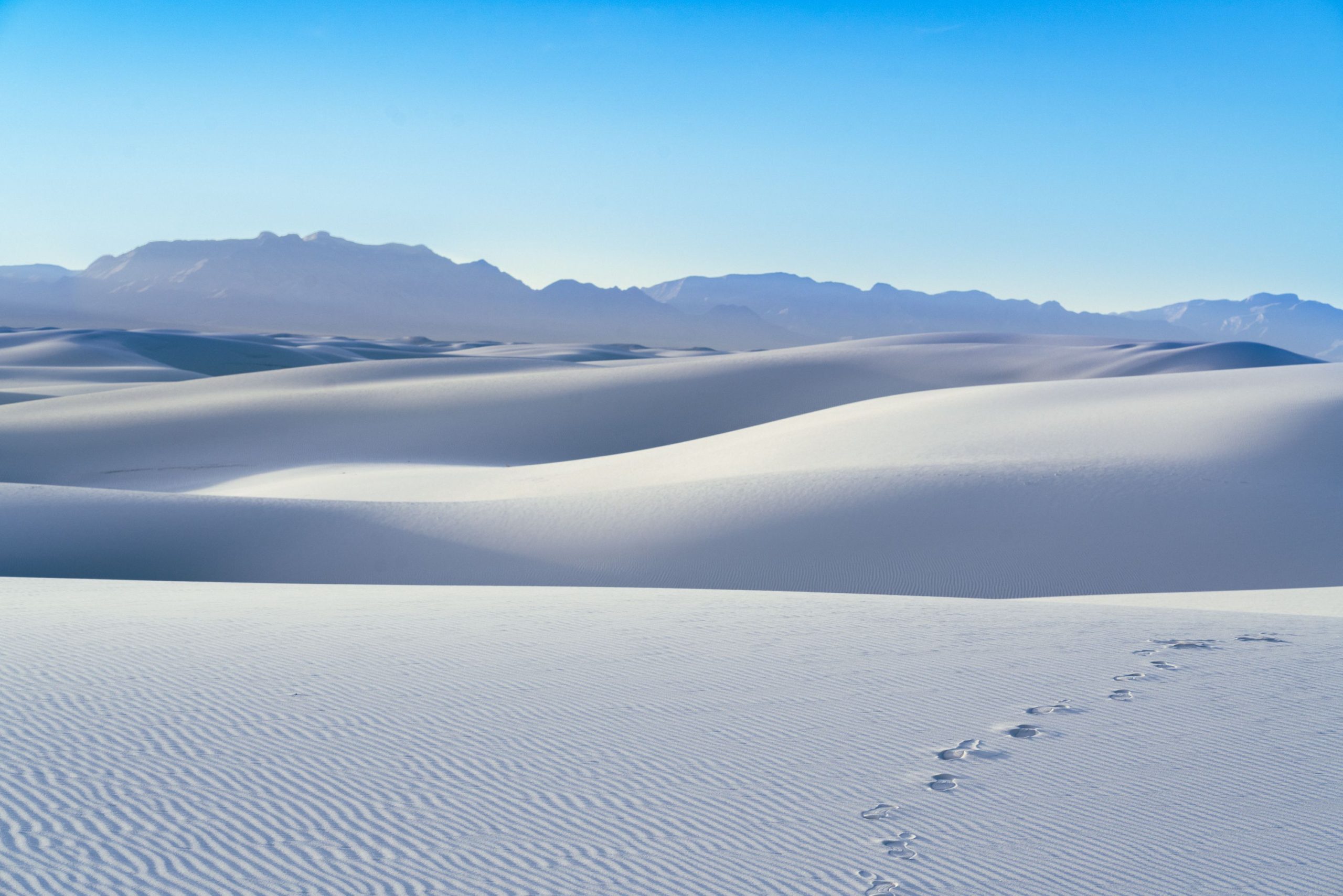
Dunes, White Sands, USA
White sand dunes as far as the eye can see… well not exactly, there were mountain ranges in every direction on the horizon. I really liked the subtle shades and the wavy forms all throughout the desert, such a beautiful place.
After sleeping somewhere outside El Paso I found out about the white sands national monument just around the corner. Normally I was a bit sceptical about the monuments as my National parks all access pass wasn’t accepted here, I had to pay extra and well, they didn’t make it to be national parks in the first place, so…
But it just looked so unreal in the pictures I had to visit. Something like a tropical version of the Great Sanddunes national park filled with a lot finer and whiter sand. The dunes were not as high but the place was still just as impressive, if not more. It seemed like straight out of a dream, all this white perfect sand everywhere, no footsteps, just the wind carving it’s structures into the sand. I stayed around for sunset, went back to the same sleeping spot and returned for sunrise the next morning. There was a circular road leading through the park and the park itself didn’t have any signposted attractions, but rather parking lots here and there. Once I picked a spot all I needed to do was walk out into the desert, there were no paths, no boundaries, all self guided. I had to be a bit careful and remember the direction I was coming from, at least roughly, as otherwise it would’ve been difficult to get back to the exact position of the car. But with the sun as my guide and a mountain range on the horizon I wasn’t too worried about getting lost and just walked out into the white sands. I felt like in a Star Wars movie, the dunes, their unreal color and them being completely untouched once I got away from the road. When lost and completely unsure just follow your footsteps back. There weren’t any other footsteps, just mine, so it wasn’t a problem at all. It had finally gotten warm again, I was just around the Mexican boarder but I was still wearing most of my clothes.
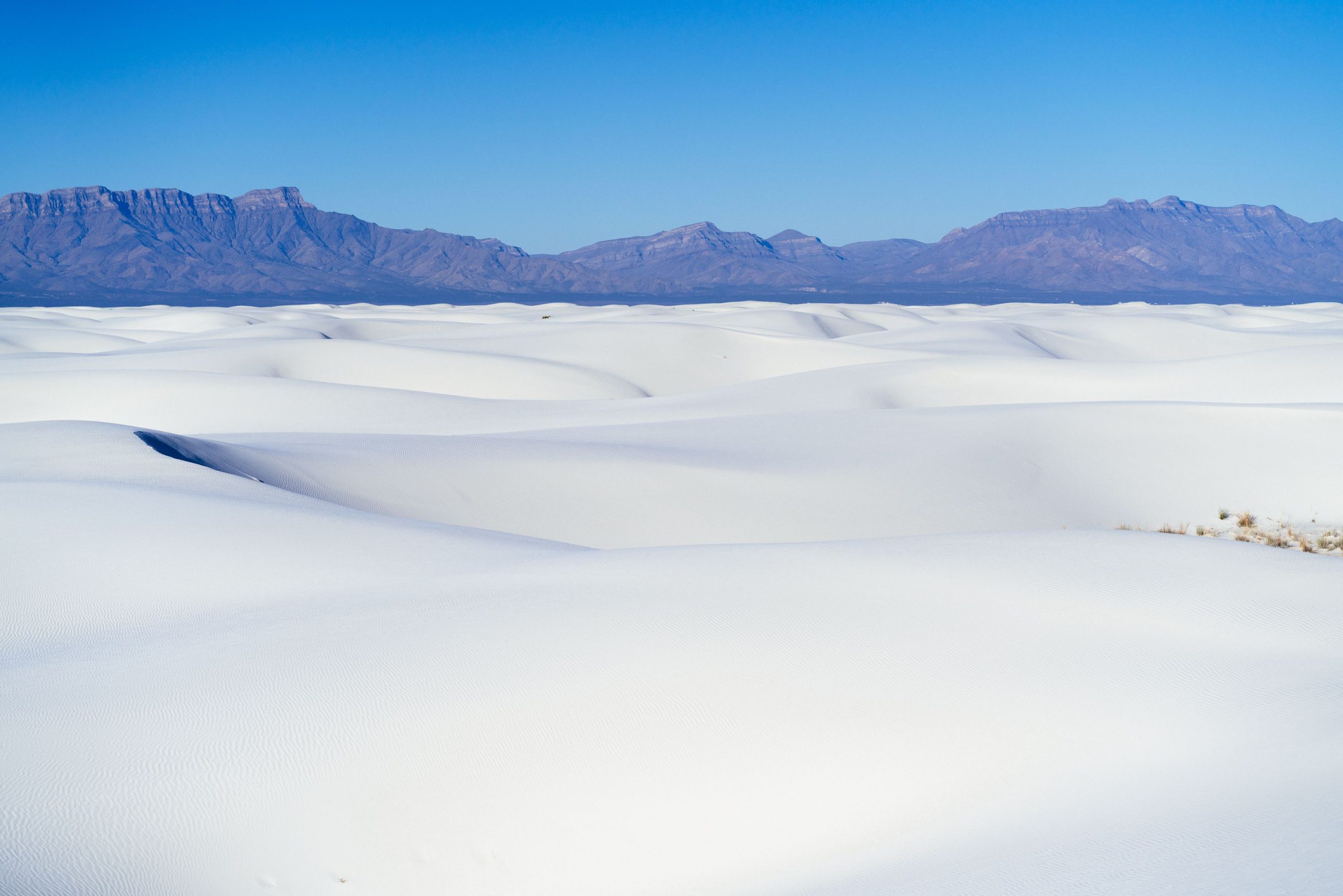
Dunes, White Sands, USA
Even though this place was the most visited national park in New Mexico, there weren’t that many people when I was there. In fact it was very hard to find them, the only places were close to the road, once I wandered off into the sand I was completely alone.
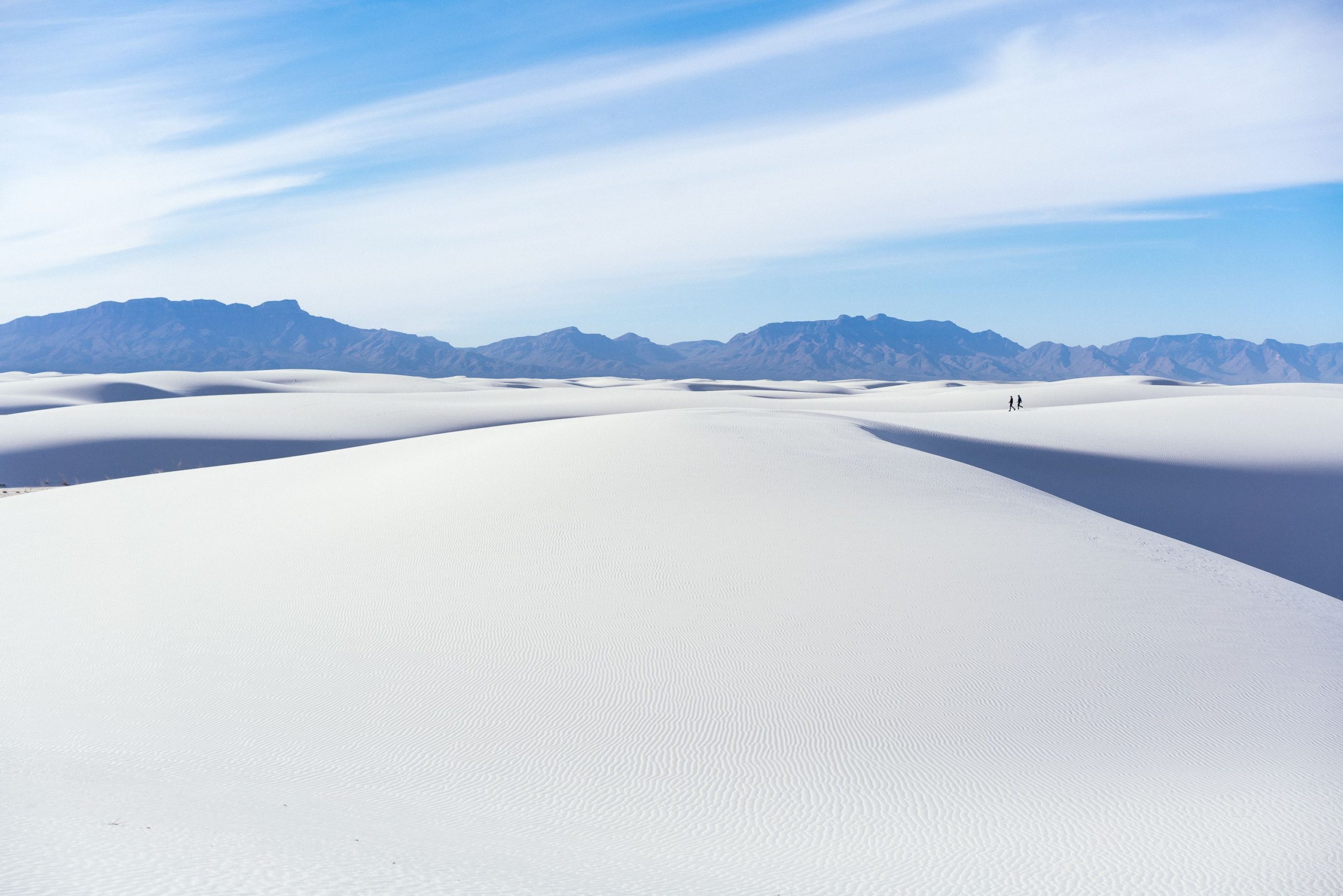
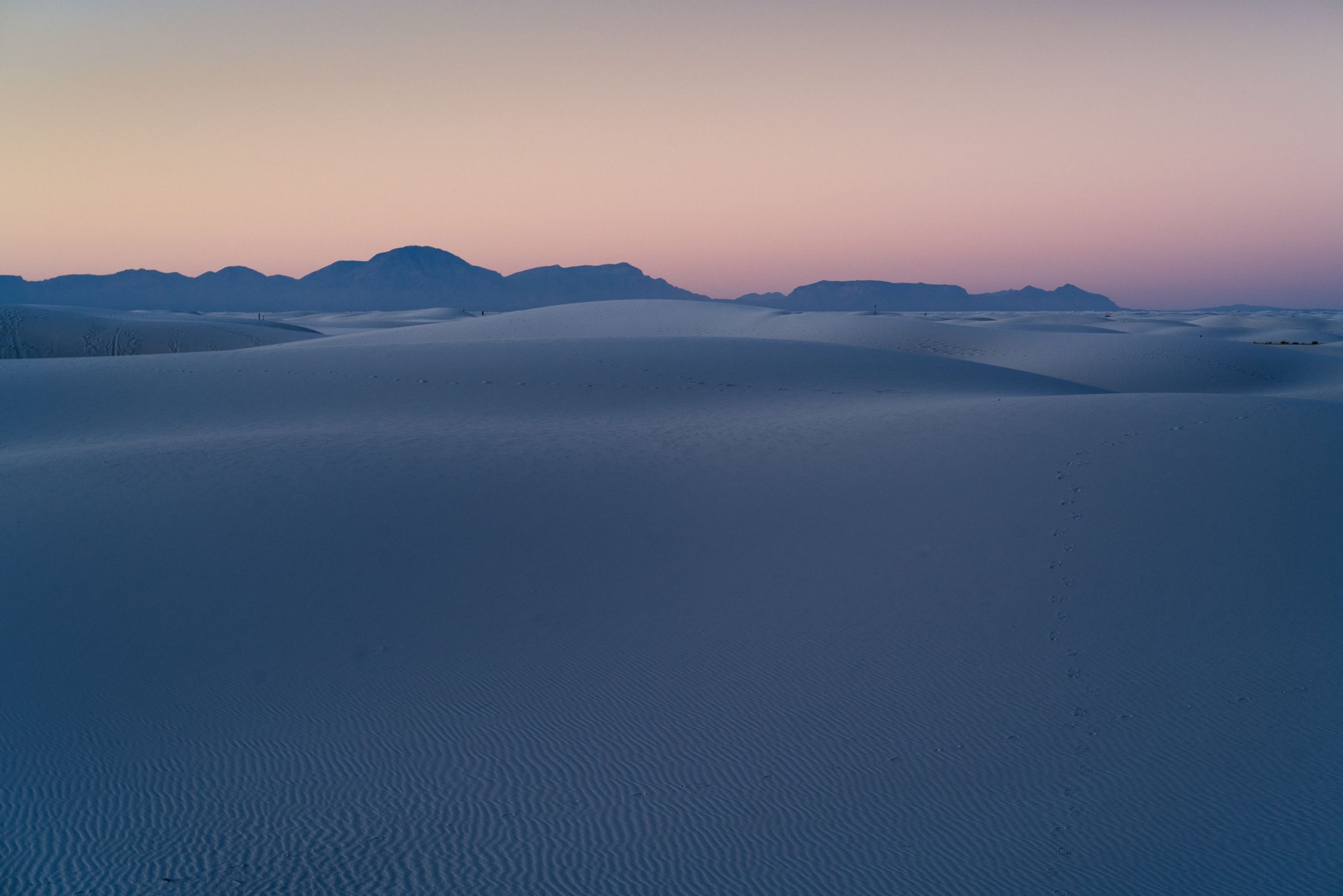
Sunset dunes, White Sands, USA
The sunset I witnessed that day wasn’t the best as the sun was covered by a lot of geo engineered clouds. Once the sun set the light situation completely changed for the better during blue hour.
Saguaro National Park
is an American national park in Pima County, southeastern Arizona. The 92,000-acre (37,000 ha) park consists of two separate areas—the Tucson Mountain District (TMD) about 10 miles (16 km) west of the city of Tucson and the Rincon Mountain District (RMD) about 10 miles (16 km) east of the city—that preserve Sonoran Desert landscapes, fauna, and flora, including the giant saguaro cactus.
The volcanic rocks on the surface of the Tucson Mountain District differ greatly from the surface rocks of the Rincon Mountain District; over the past 30 million years, crustal stretching displaced rocks from beneath the Tucson Mountains of the Tucson Mountain District to form the Rincon Mountains of the Rincon Mountain District. Uplifted, domed, and eroded, the Rincon Mountains are significantly higher and wetter than the Tucson Mountains. The Rincons, as one of the Madrean Sky Islands between the southern Rocky Mountains and the Sierra Madre Oriental in Mexico, support high biodiversity and are home to many plants and animals that do not live in the Tucson Mountain District.
Earlier residents of and visitors to the lands in and around the park before its creation included the Hohokam, Sobaipuri, Tohono O’odham, Apaches, Spanish explorers, missionaries, miners, homesteaders, and ranchers. In 1933, President Herbert Hoover used the power of the Antiquities Act to establish the original park, Saguaro National Monument, in the Rincon Mountains. In 1961, President John F. Kennedy added the Tucson Mountain District to the monument and renamed the original tract the Rincon Mountain District. Congress combined the Tucson Mountain District and the Rincon Mountain District to form the national park in 1994.
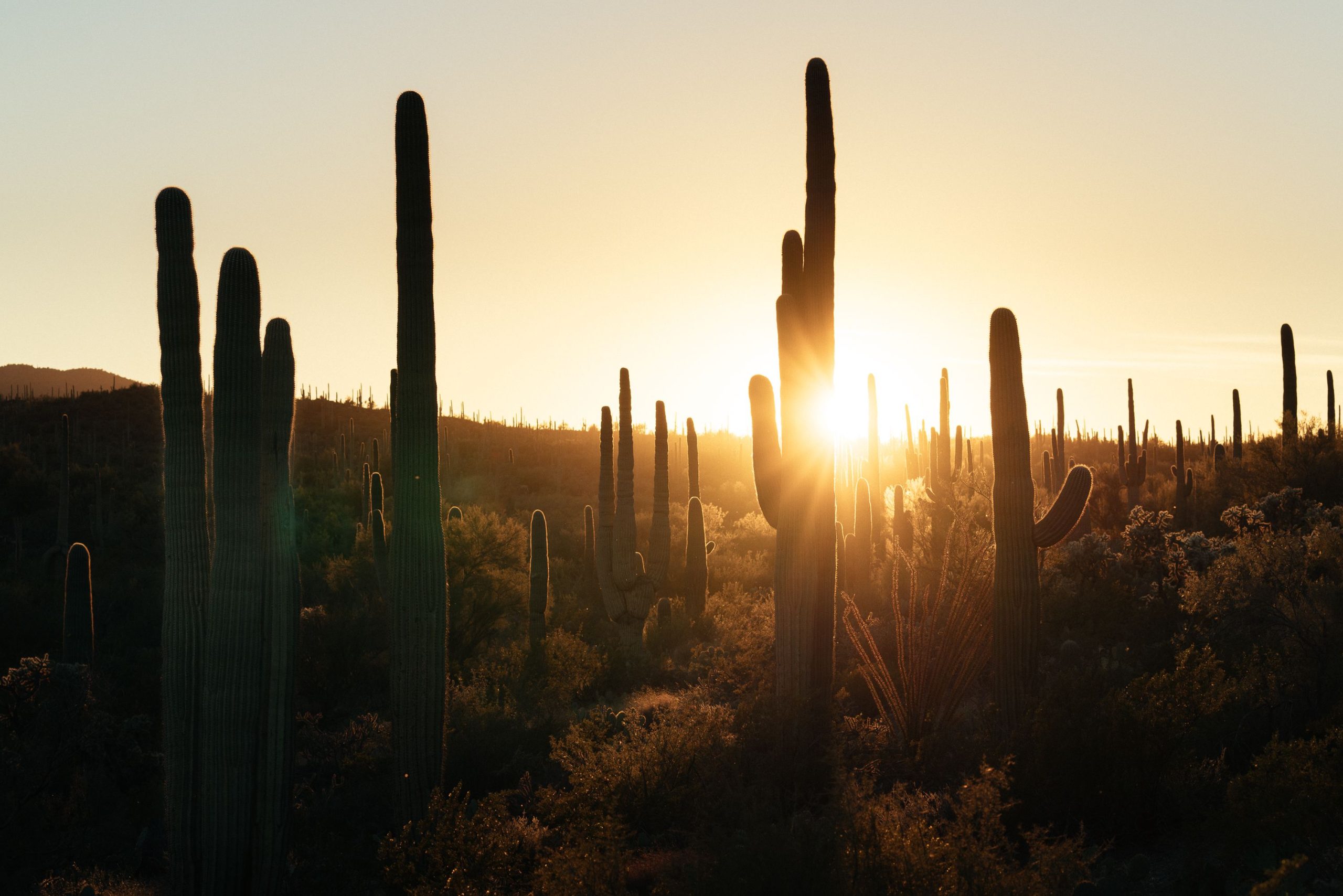
Sunset over Sagaurdo, Arizona, USA
I had been looking the whole day for a spot to shoot sunset and I ended up on the hillside of a mountain overlooking parts of the park and the roads. Nearly died when I stumbled and fell into the cacti whilst jumping from rock to rock.
Once I was happy with what I had gotten in the White Sands national park I left for Tucson to visit Saguaro national park.
It turned out to be the only national park that was located in a bigger city. I left white sands around midday, had to find coffee and cigarettes before and get on my whole day highway mission. The police stop checked me on the highway and it was fine, when they asked me where I was coming from and I answered Tucksonn (it’s pronounced Tuuh-son) the officer didn’t understand at first but then started laughing and let me pass.
I enjoyed the vibes in Tucson, the Spanish touch with the colonial architecture was amazing and it was finally warm again. This is how I had imagined life in the desert, cacti and colonial architecture. I was able to wear shorts in December, but only in the daytime (it wasn’t that hot) It was a great feeling to have the sun shine on my shins after all these cold days and nights. Tucson was the only American city (apart from the Californian beach towns) that I liked and could’ve imagined to stay longer. Having the park just outside the city was very convenient, after shooting sunrise I was able to do some chores, mainly a shower and work duties without too much effort. A community center just opposite the library was great. I was able to enter the park again just after, without having to plan in 1-2 hours of driving. The cacti were impressive and also something that everyone outside the USA immediately connects with the Wild West, just like monument valley’s mesas or the Grand Canyon. I just had to see them. They were great, bigger in size and numbers than expected. The cacti were just everywhere, not just inside the park, and quite dangerous too, jumping and climbing around the hills they sat on I definitely got stung quite a few times, an uncontrolled jump or a stumble with a fall would’ve ended quite badly, possibly deadlyz Different species of cacti had different spikes, some were soft and really annoying to remove from the skin, while others were just like needles.
